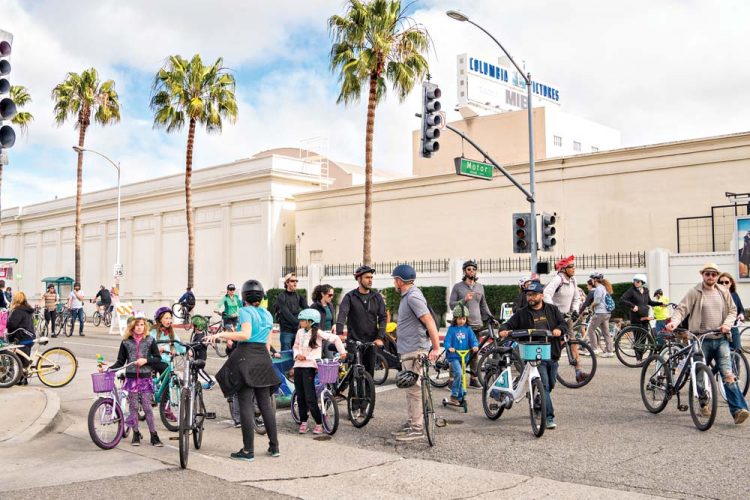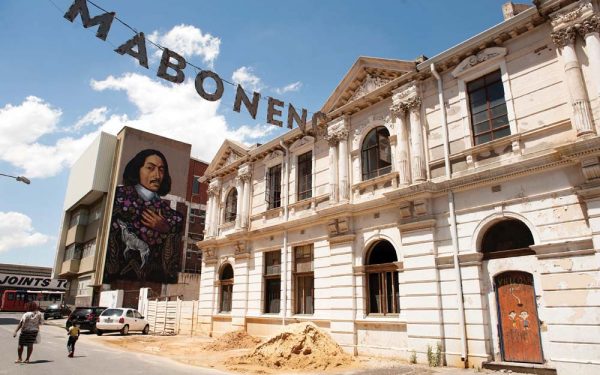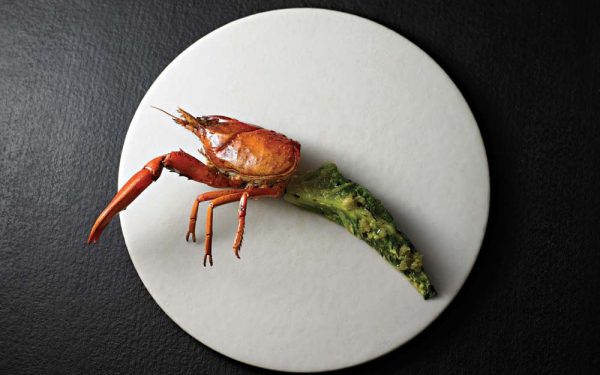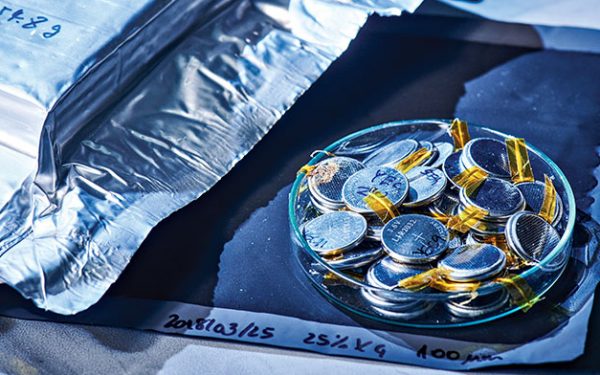Palm trees line Avalon Boulevard on an overcast day in the southernmost neighbourhood of Los Angeles, Wilmington. The wide, open road is surrounded by flat commercial buildings on either side, conforming to the stereotype of a low-slung, expansive Angeleno car culture. But this street is missing the routine rumble of engines and horns. Instead, the pleasant hum of overheard conversations and chirping birds dominates as thousands of motorless wheels pedal down the quiet street – bicycles, skateboards, rollerblades, scooters, even a unicycle.
Car-free events like this one stem from a concept pioneered in Bogotá, Colombia, and have spread to urban metropoles all over the world. Since its Los Angeles inception in 2010, CicLAvia, which closes down a two- to six-mile route for each event, has persuaded over one-and-a-half million people to abandon their air-conditioned cars for the afternoon and explore streets infused with history, small businesses and hyper-local culture.
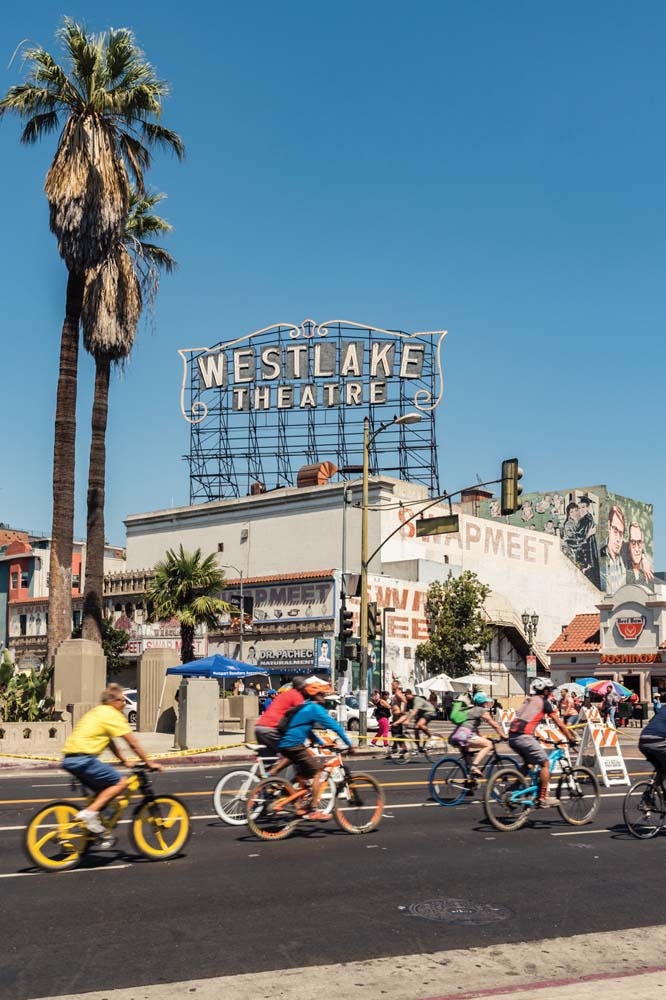
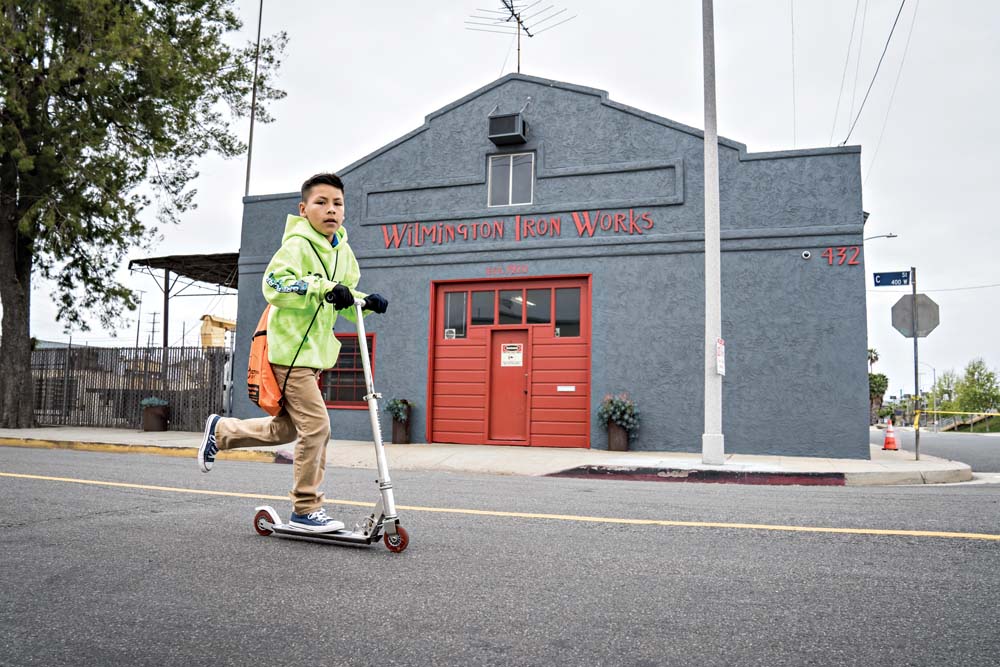
“Our mission is all about connecting communities, connecting people, giving folks a sense of imagination and rediscovery of the city where they live, without being in a car,” says Romel Pascual, the executive director of CicLAvia. And with 100 neighbourhoods in the City of Angels, each event proves there is always more to explore.
Long before modern Los Angeles, Wilmington entrepreneur Phineas Banning was instrumental in founding the Port of Los Angeles, which borders the neighbourhood’s southern edge. His historic Victorian mansion, built in 1864, has become a landmark of Wilmington’s important role creating the city, yet few people outside the neighbourhood know about it. The CicLAvia route takes riders directly past the mansion (now a museum) on its tour. Then, it continues past a historic hotel, The Don, a non-profit senior living facility and a Civil War museum. It concludes at the waterfront park overlooking a massive port, now the largest in the US.
Getting to this little-known corner of the city is a part of the event’s outreach, too. Los Angeles is a city with 6,500 miles of streets, making it the largest and most congested municipal street system in the US. Its car culture was created and encouraged by the automobile industry of the 1940s and 1950s, but today, many Angelenos recognise that this culture has devastating effects – both psychologically and environmentally. Many blame the freeway system for isolating residents from each other and their neighbourhoods. Initatives like CicLAvia aim to change residents’ relationship to transportation, and thus to their local surroundings.
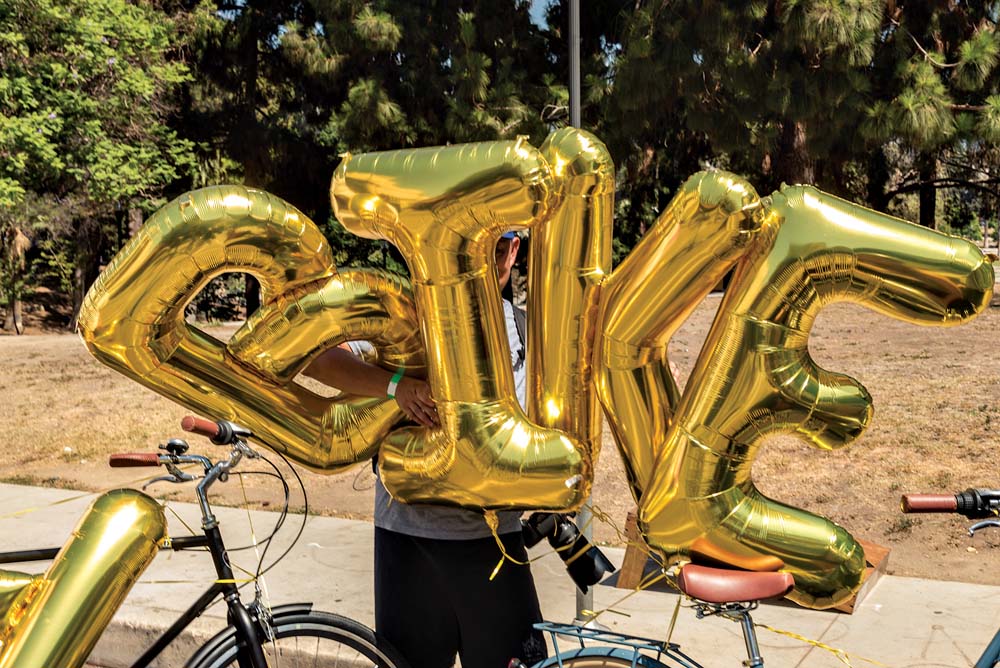
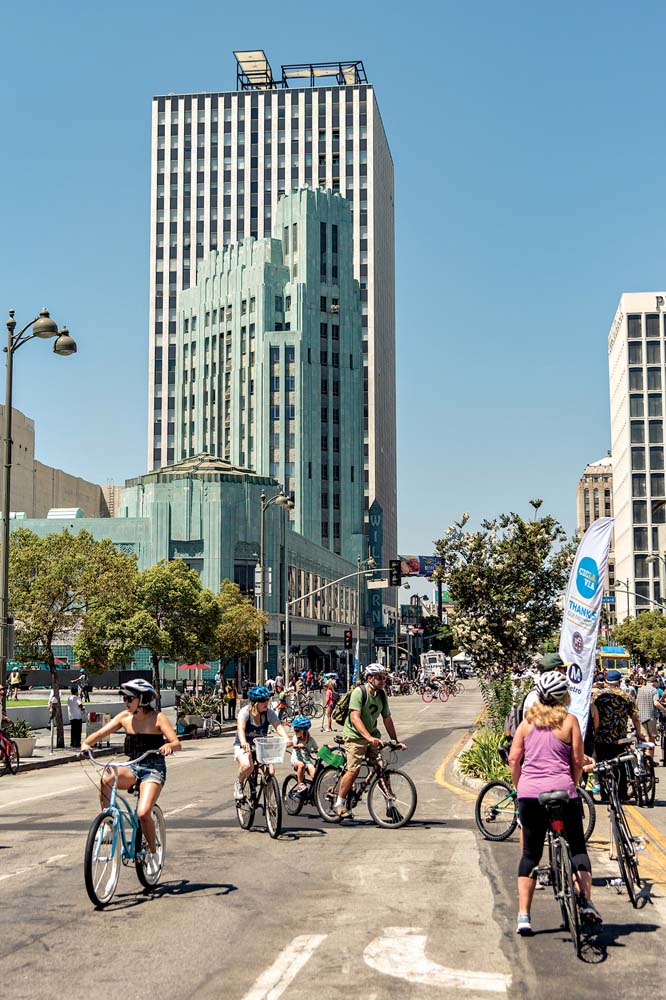
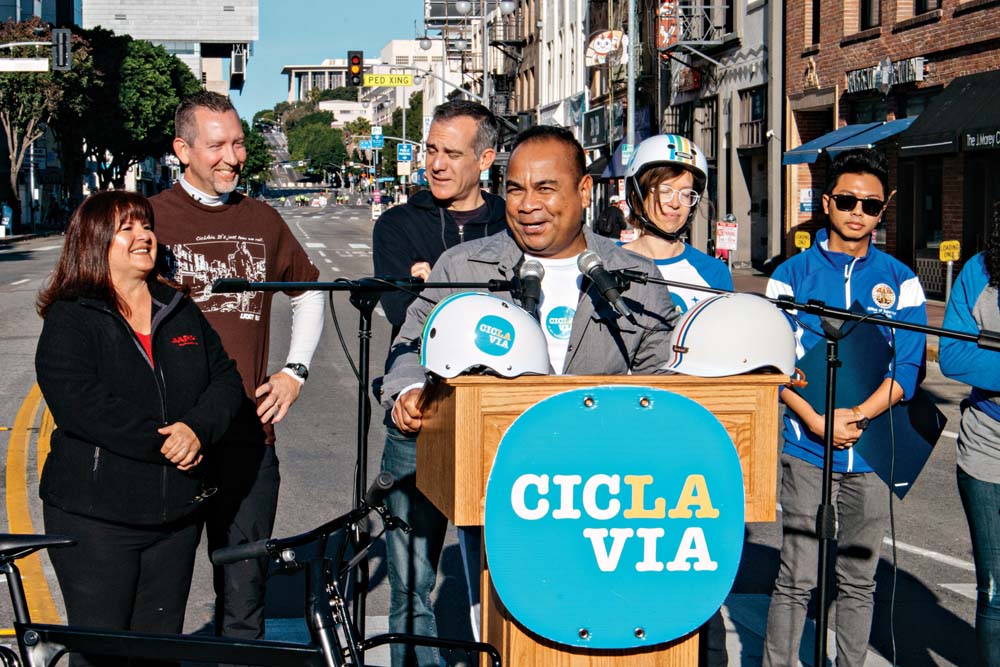
Pascual, formerly the deputy mayor of Los Angeles, sees CicLAvia as a way to show people the possibilities inherent in human-powered transport. “The impact it has had on the city is seen by how people approach sustainability, climate change and public transit,” Pascual says. “The image of CicLAvia has showed people in a three dimensional way how they want the future to be.”
Partnering with UCLA researchers, the organisation measured the impact of the event on social and public health, air quality and economic development on a few recent event Sundays. Taking cars off the road along the event route resulted in a 49 per cent reduction in particle pollutants on the event day, and local businesses along the route saw up to a 57 per cent boost in sales.
Metro ridership also sees a significant bump during events, with many people at CicLAvia reporting taking their first ever public-transit ride to get to the event. Routes are often placed near Metro rail stations to encourage door-to-door alternatives to vehicles. This initial introduction to car alternatives often creates longer-lasting behaviour change, seen by an increase in monthly Metro pass-holders as well as city bike lanes in the years since CicLAvia began. “We’re opening up their [Angelenos’] way of thinking about the city by looking at all the options, including looking at public transit as an option,” says Pascual. “In the long run, we hope that introducing people to being a user on the streets changes their mindset and that you’re going to see the street differently even when you’re driving, and react a little differently.”
Along the route, non-profit grant recipients from LA2050 also display their visions of the future for Los Angeles. The grant programme, funded by social impact firm the Goldhirsh Foundation, also supports CicLAvia. The organisation’s president, Tara Roth, describes LA2050 as “creating a shared vision for the future of LA that drives and tracks progress toward that vision.”
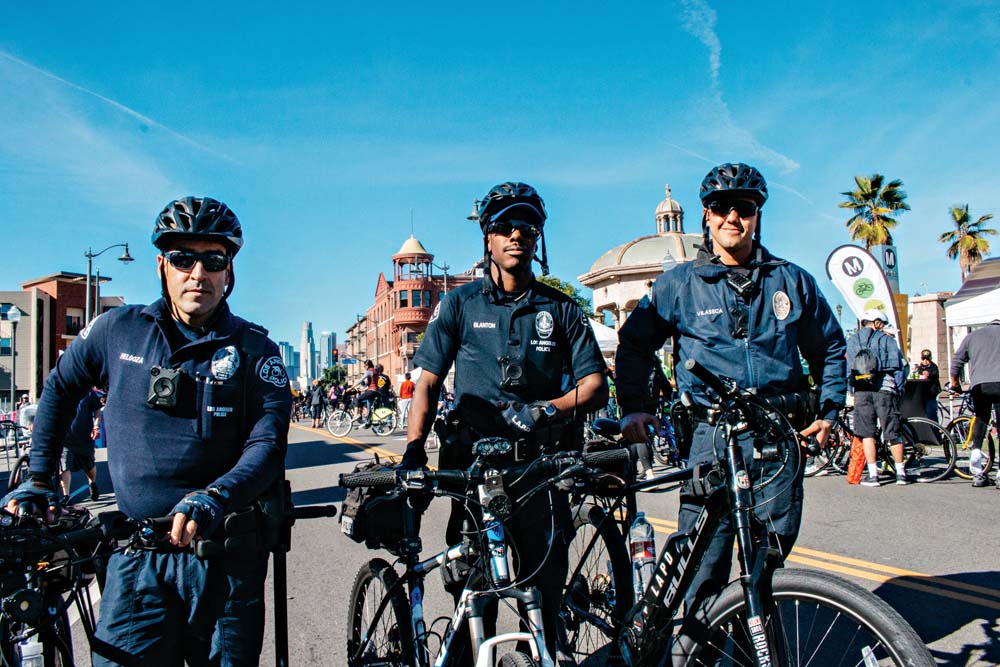

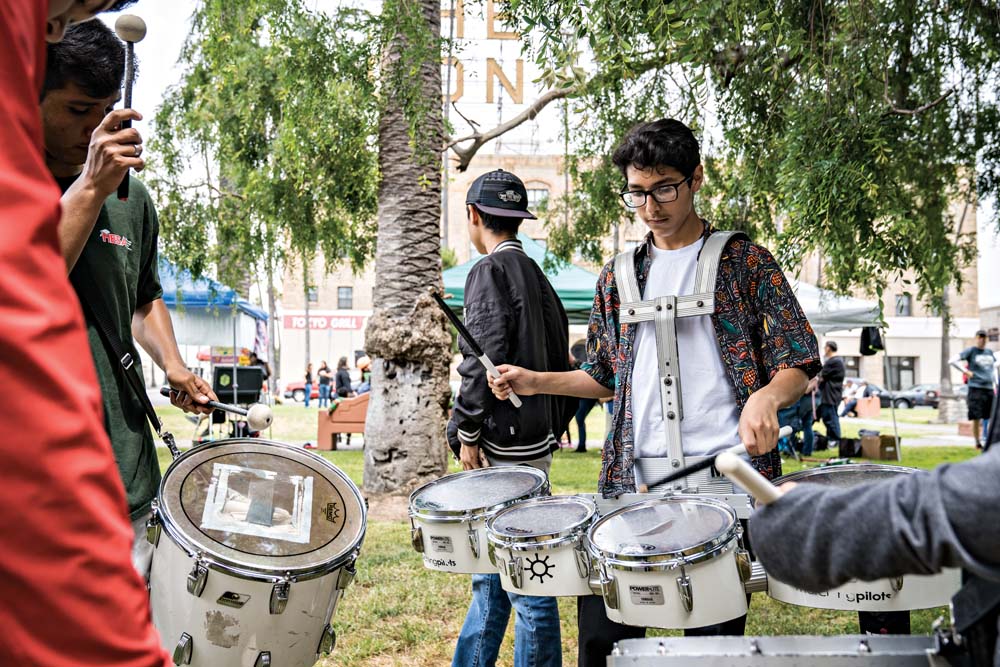
Many grantee pilot programmes populate the streets, from food trucks funded with microcredit loans, to a non-profit highlighting homelessness as a community issue, and even an athletic grant that introduces lacrosse to Wilmington kids. The combination of social impact, public health and environmental awareness that brought CicLAvia, Goldhirsh and Wilmington together builds a distinctly creative portrait of 2050. “When it comes to our region’s future, Wilmington is a part of the country’s busiest port and home to one of California’s densest concentrations of bike lanes, so it felt like a natural fit for this CicLAvia,” explains Roth. She’s taking the Wilmington ride with her son after the opening press conference with Pascual. “Whatever my role in CicLAvia, I can’t help getting excited when my son gets to ride safely and freely on LA streets that are closed to cars.”
As city residents from across the expanse of miles, parking lots and neighbourhoods begin to speak with each other on a leisurely bike ride a geographically sparse city forms a new emotional and social bond. This is the outcome that brings a spark to Pascual.
“If we’re able to showcase, not just taking cars off the road, but also that we have a community that’s a lot closer than we think, and that we have a lot more commonalities than differences, and that we promote inclusion by being together, it creates a whole new narrative for a city known for its sprawl.”
The next Los Angeles CicLAvia takes place June 30 and spans seven neighbourhoods across four miles of central Los Angeles, from Mid City to Pico-Union.

